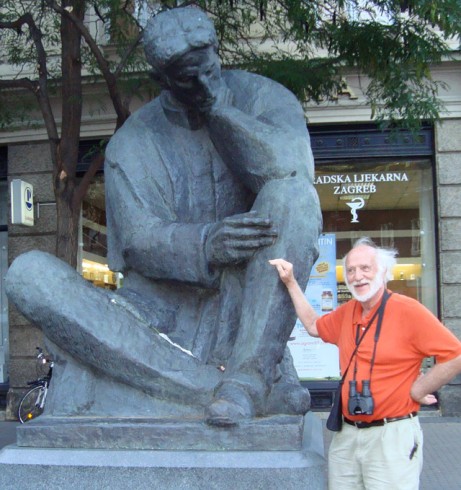5 Questions With . . . Bill Trousdale on Energy

This issue, we ask “5 Questions” of Bill Trousdale, professor of physics, emeritus. He recently lectured on “Global Warming and Energy Options” and “The Pros and Cons of Nuclear Energy.”
Q: Professor Trousdale, you researched solid state physics at Wesleyan for 30 years, retiring in 1989. Did you always have a side interest in energy creation, consumption and global warming?
A: Yes for almost as long as I can remember, in the early 1950s when I learned about the second law of thermodynamics. I was appalled by burning oil at 2,000 degrees to maintain a house at 72 degrees. That is a thermodynamic abomination. Starting in 1972 I became interested in global warming. Why interested? Industrial civilization is based on the availability of abundant energy and up until now that energy has been very inexpensive. Fossil fuels became the source of cheap energy because of their ready accessibility and high energy density, but with an ever growing world population and increasing per capita energy use, the environmental dangers of fossil fuels have become the limiting factor in their use. It became evident to me in 1972 that it was imperative to find non-polluting alternatives. Of the nonpolluting — or less polluting — sources, the low energy density of wind and solar energy makes it difficult to gather them, and unlike fossil or nuclear energy it must be stored, a most difficult problem. Nuclear energy has its own dangers and its expansion will face enormous opposition. The mixture of scientific and social problems on a scale never seen before is a fascination.
Q: On Nov. 8, you spoke to the local community on “Global Warming and Energy Options.” There, you estimated that the U.S. would need to spend about $13.5 trillion, or $45,000 a person, to satisfy the country’s energy requirements. How did you come up with these figures?
A: The U.S. has a population of close to 300 million and the U.S. energy consumption is estimated at 5,000 kilowatt hours per year. So to produce solar power to satisfy this consumption rate, we would need 20,000 square miles of photovoltaic cells. The construction costs are about $29,000 per person, and energy storage systems are about $15,000 per person. It also costs about $670 per person to transport the energy on high-capacity aluminum lines from the southwest. It adds up to about $45,000 a person.
The numbers are estimates based on Department of Energy figures for the capital costs for the construction of new facilities. The total energy needs I optimistically chose are about two-thirds of what we now use. The unfolding in some detail of the solar option was not a proposal, but rather an illustration of how large and difficult the problem actually is. There was a lot of guess work in the cost estimates and as a secondary guess, I suspect my estimates are on the low side, but not by more than a factor of two.
Q: Do you think it’s possible to power the country completely on photovoltaic cells?
A: From a scientific-engineering point of view, yes, it is possible. However, I do not believe that a shift to total dependence on solar energy is the way to go. A more careful analysis than I have done would, I believe, come up with a mix of wind, solar, nuclear, geothermal, fossil, etc.
Q: How can we afford to shift away from our dependence on fossil fuels?
A: In the 1920s and 30s TVA and some of the great western dams were built. At that time they were very large projects. In World War II we nearly gave up production of consumer goods; military spending in 1943 was 3/8 of GDP. If we believed that the threat of global warming in 2010 was a serious as the threat of Fascism in 1943, there would be more than adequate resources to make the shift. Are you willing to put off the purchase of your next new car for two years? Maybe a diversion of resources to the energy problem would in the long run create a pent-up demand, which in turn would lead to a prolonged period of prosperity. Didn’t that happen during and after World War II?
Q: Brian Stewart, chair and associate professor of physics, associate professor of environmental studies, says you have “an interest in the world around you.” How so?
A: The world is boundlessly interesting, from 16th century English poetry to the Higgs particle, not that those are either time or space limits. My favorite popular reading is the London Review of Books because it carries so many things I know little or nothing about. In that way it is better than the New York Review of Books.

